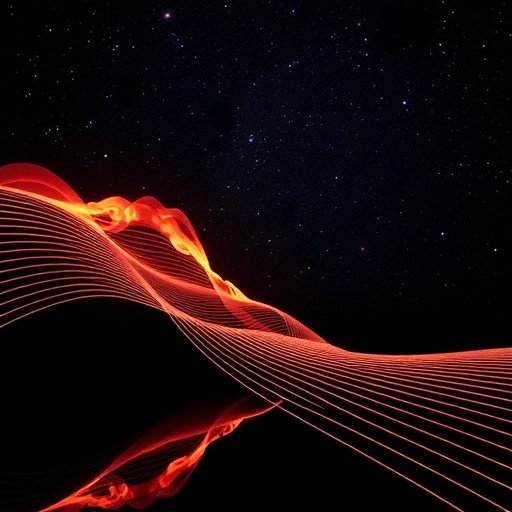Gravitational wave detection, a frontier of modern astrophysics, has captured the attention of scientists and laypeople alike. In recent years, the groundbreaking work on this topic has prompted a surge of research interest, especially as cutting-edge techniques evolve. The noted correction to the foundational studies on gravitational wave detection by interferometry, as addressed by Rowan and Hough in their recent publication, offers crucial insights into these advancements. Their analysis builds upon decades of pioneering work in the field, which combines intricate technology with the profound implications for our understanding of the universe.
Gravitational waves, ripples in spacetime created by colossal astronomical events—such as the collision of black holes or neutron stars—were first detected directly by the LIGO observatory in 2015. This moment marked a revolution in astrophysical observations, allowing scientists to “hear” the universe in a novel way and providing a new method to explore cosmic phenomena that were invisible to traditional telescopes. Since then, the field has rapidly expanded, integrating theoretical predictions and experimental techniques to improve detection capabilities.
Interferometry has emerged as a predominant technique for detecting these waves, relying on the principle of superposition of light waves to measure minute changes in distances. The sensitivity of such measurements must reach an unprecedented level due to the incredibly faint nature of gravitational waves, which represent variations on the order of a fraction of the diameter of a proton. This sensitivity has spurred the development of advanced methodologies and state-of-the-art technology designed for both ground-based and space-based observatories.
The recent correction noted in the work by Rowan and Hough discusses potential discrepancies within the previously published texts on gravitational wave detection. Accuracy is paramount in this field, as errors can lead to misinterpretations of data and undermine the legitimacy of research findings. This emphasizes the need for continuous scrutiny of models and methods used in gravitational wave astronomy, no matter how groundbreaking they may initially appear.
Rowan and Hough’s exploration into correcting existing literature not only highlights the dynamic nature of scientific inquiry but also reinforces a community ethos that values accuracy and collaborative improvement. The correction itself is an emblematic instance of how scientific knowledge evolves; as researchers uncover new evidence and refine their theories, it is paramount to update the body of work accordingly. The integrity of the scientific process depends on this constant re-evaluation and correction of our understanding.
The implications of their findings extend beyond just the detection of gravitational waves. As improvements in interferometric techniques are made, they directly influence the broader field of astrophysics, leading to better models for the formation and evolution of cosmic structures. An enhanced understanding of such phenomena is crucial for deciphering the mysteries surrounding black holes, neutron stars, and the very fabric of spacetime itself.
Future observatories, like the planned space-based LISA (Laser Interferometer Space Antenna), will also benefit from the advancements highlighted by Rowan and Hough. This ambitious project aims to detect low-frequency gravitational waves emitted by supermassive black hole mergers and other cosmic events, reaching frequencies that are impossible for Earth-based detectors due to terrestrial noise. The learnings from the correction will help shape the methodologies and designs of future experiments, ensuring that they are grounded in the most accurate and detailed understanding available.
In their article, Rowan and Hough also touch on the importance of international collaboration in gravitational wave research, as the complexity and expense of such endeavors often require pooling resources and expertise from scientists around the globe. This collegial environment fosters innovation, with various groups contributing unique perspectives and methodologies, ultimately leading to more robust findings.
Furthermore, the correction serves as a reminder of the potential for scientific advancements to invigorate public interest. Gravitational waves represent a blend of science and cosmic wonder, engaging not only academic circles but also igniting curiosity among the general populace. As each new discovery becomes accessible through various media, including viral content, platforms can further spread excitement and educational outreach.
Adopting advanced technologies in detection techniques has implications for various other fields beyond astronomy, including fundamental physics and engineering. Techniques such as precision measurement, noise reduction, and quantum mechanics applications used in gravitational wave interferometry may find their way into practical technologies applicable in other industries, pushing innovations on multiple fronts.
As public understanding of gravitational waves grows, so does the anticipation of future discoveries. The awaited detections of new events will similarly lead to a deeper connection between the science community and the general public. The mysteries these events unfold—like the nature of dark energy, the behavior of matter at extreme densities, and the dynamics of high-energy astrophysics—are stories waiting to be told.
In conclusion, the remarkable study by Rowan and Hough provides an essential correction to the existing body of knowledge on gravitational wave detection through interferometry. Their work illustrates the lively, iterative nature of scientific exploration and inspires confidence that with every correction and enhancement, we inch closer to comprehending the profound mysteries of the universe. As more advancements unfold, the collective efforts of researchers engaged in gravitational wave astronomy are sure to deliver insights that will reshape our current understanding of the cosmos.
Subject of Research: Gravitational Wave Detection by Interferometry
Article Title: Correction to: Gravitational wave detection by interferometry (ground and space)
Article References: Rowan, S., Hough, J. Correction to: Gravitational wave detection by interferometry (ground and space). Living Rev Relativ 25, 5 (2022). https://doi.org/10.1007/s41114-022-00039-6
Image Credits: AI Generated
DOI: 10.1007/s41114-022-00039-6
Keywords: Gravitational Waves, Interferometry, Astrophysics, LIGO, LISA, Cosmic Phenomena, Scientific Correction, Space-based Observatories, Collaboration, Detection Techniques.




